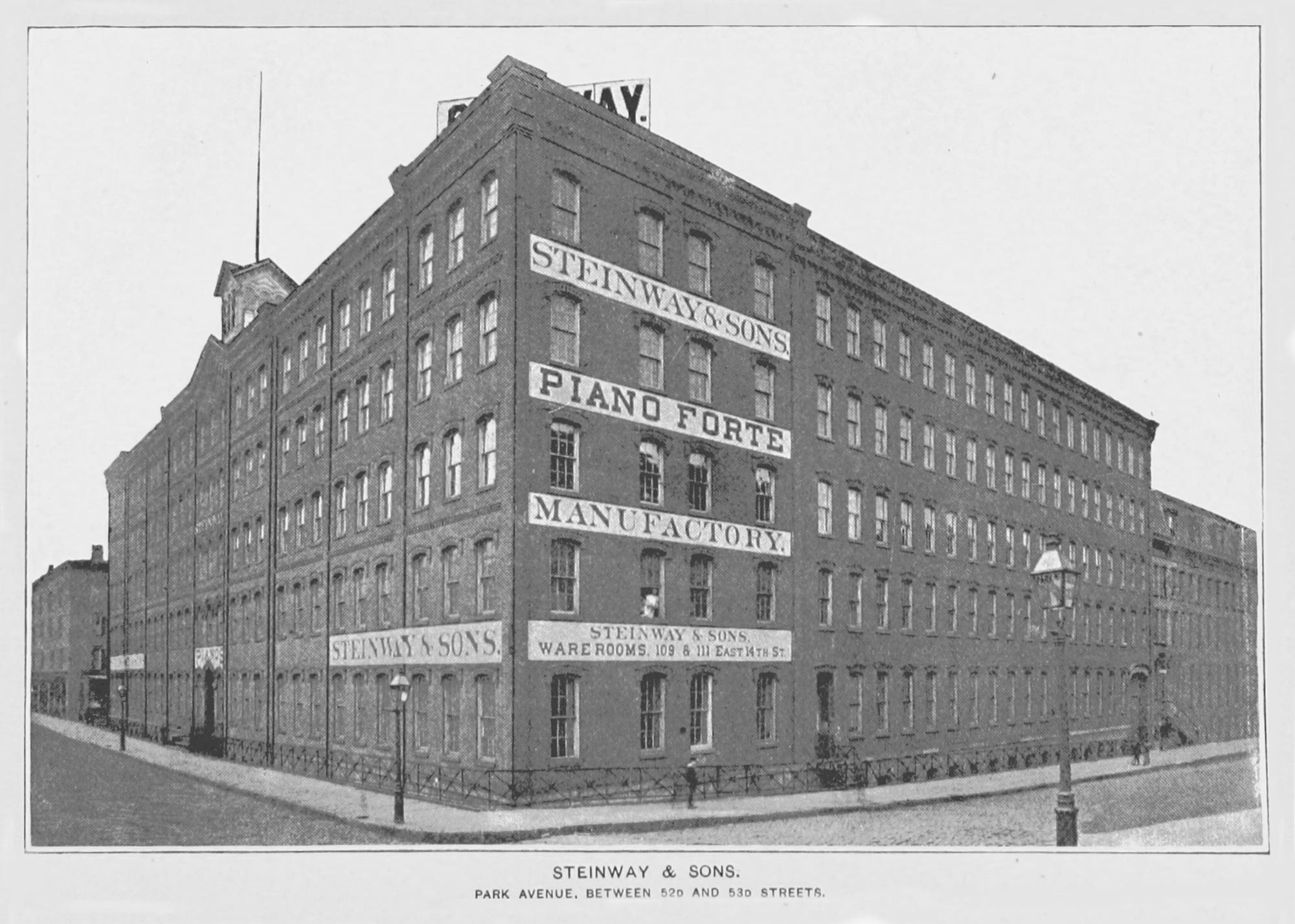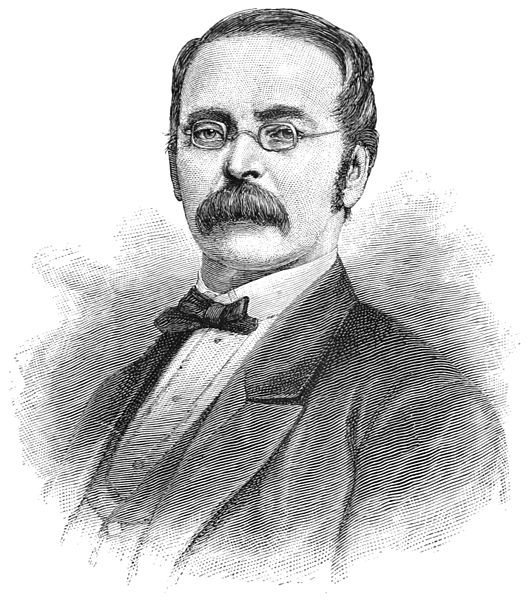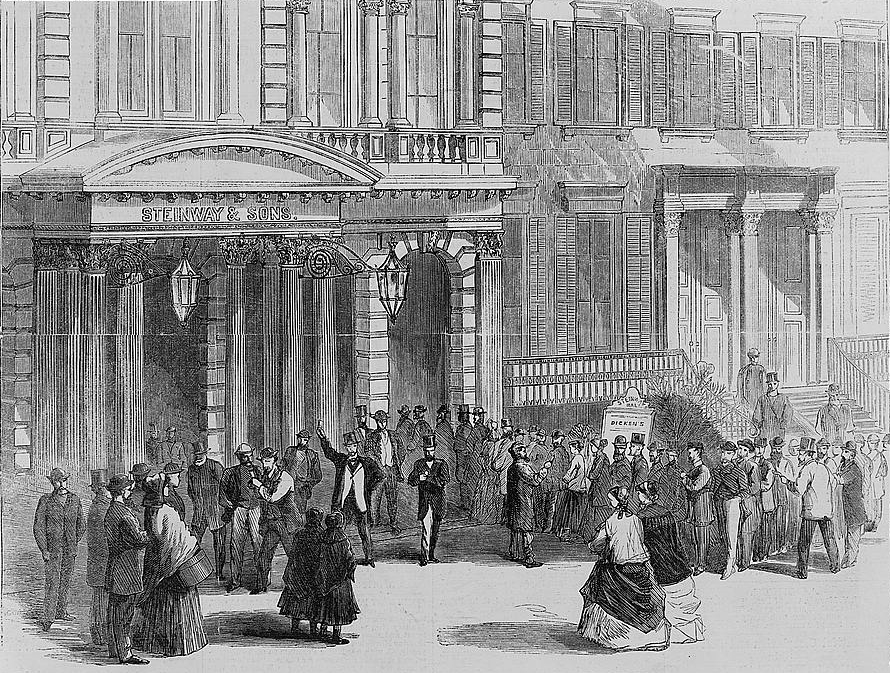


Heinrich Engelhard Steinweg first made pianos in the 1820s from his house in Seesen, Germany. He made pianos under the Steinweg brand until he emigrated from Germany to America in 1850 with his wife and seven of his nine children.[34] The eldest son, C. F. Theodor Steinweg, remained in Germany, and continued making the Steinweg brand of pianos, partnering with Friedrich Grotrian, a piano dealer, from 1856 to 1865. In 1853, Heinrich Engelhard Steinweg founded Steinway & Sons. His first workshop in America was in a small loft at the back of 85 Varick Street in the borough of Manhattan in New York City. The first piano made by Steinway & Sons was given the number 483 because Heinrich Engelhard Steinweg had built 482 pianos in Germany. Number 483 was sold to a New York family for $500, and is now on display at the German museum Städtisches Museum Seesen in Seesen, the town in which Heinrich Engelhard Steinweg began his career as a piano maker.A year later, demand was such that the company moved to larger premises at 82–88 Walker Street. It was not until 1864 that the family anglicized their name from Steinweg to Steinway.
From 1864 to 1866, William Steinway, who is credited with establishing Steinway's success in marketing, oversaw the construction of Steinway Hall on East 14th Street in Manhattan, New York City. Steinway Hall had cost $200,000 to build. It included the second largest concert hall in New York City as well as showrooms for Steinway pianos. To enter the concert hall concertgoers had to pass through the showrooms, a way to advertise Steinway pianos. Sales increased by more than 400 pianos in 1867. Steinway Hall quickly became one of New York City's most prominent cultural centers, housing the New York Philharmonic for the next 25 years until Carnegie Hall opened in 1891.
In 1925, the Steinway Hall on East 14th Street was closed and a new Steinway Hall on West 57th Street was opened. In 2013, Steinway sold the Steinway Hall on West 57th Street for $46 million and moved out of the building at the end of 2014. In 2016, a new Steinway Hall opened on Sixth Avenue.
A second Steinway Hall was opened in London in 1875. It was located first on Wigmore Street, in 1924 it moved to St. George Street, and later it moved to its current address on Marylebone Lane.

In 1857, Steinway began to make a line of art case pianos, designed by artists. In 1903, the 100,000th Steinway grand piano was given as a gift to the White House; it was decorated by the artist Thomas Wilmer Dewing. The 100,000th Steinway grand piano was replaced in 1938 by the 300,000th, which remains in use in the White House. The piano is normally placed in the largest room of the White House, the East Room. Duration: 3 minutes and 27 seconds.3:27 Harold Bauer playing Saint-Saëns' Piano Concerto No. 2 in G minor, Op. 22, an excerpt of 3rd movement. Duo-Art recording 5973-4 played on a Steinway grand piano model XR 6'2" Duo-Art from 1920. Later, Steinway diversified into the manufacture of player pianos. Several systems such as the Welte-Mignon, Duo-Art, and Ampico were incorporated. During the 1920s, Steinway had been selling up to 6,000 pianos a year. In 1929, Steinway constructed one double-keyboard grand piano. It has 164 keys and 4 pedals. (In 2005, Steinway refurbished this instrument)
After the 2008 economic downturn, Steinway grand piano sales fell by half, and 30 percent of the union employees were laid off at the Queens factory between August 2008 and November 2009. Sales were down 21 percent in 2009 in the United States. But sales began increasing a little in 2010, and they continued to improve the following year. In 2015, Steinway went back to the player piano industry from around the 1920s by introducing a digital player piano series called Spirio. The technology in the Spirio pianos was created in 2007 by Wayne Stahnke, an Austrian engineer who has previously made digital player piano systems for other piano companies, like Yamaha and Bösendorfer. Wayne Stahnke's technology, originally called Live Performance Model LX, was sold to Steinway in 2014 and re-branded as Spirio. In contrast to player pianos by other brands, a recording option is not available in the Steinway Spirio. In 2018, a recording option was made available in Steinway Spirio pianos, known as the Spirio. In 2015, Steinway made its 600,000th piano. The piano features the Fibonacci spiral and Macassar ebony veneer. It took 6,000 hours of work over 4 years to make the piano. It was priced at $2.4 million. As of early 2021, Paulson & Co. remains the ultimate parent of Steinway & Sons., with head office at 1251 Avenue of the Americas, New York, NY 10020.